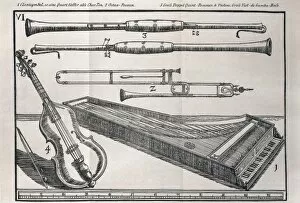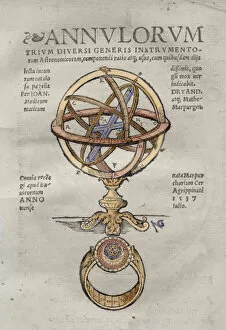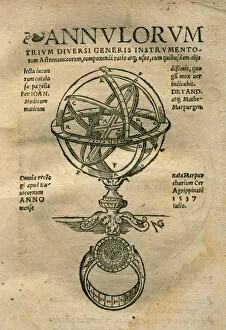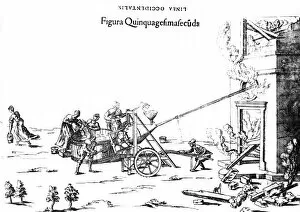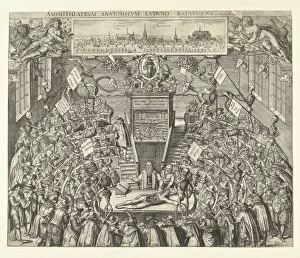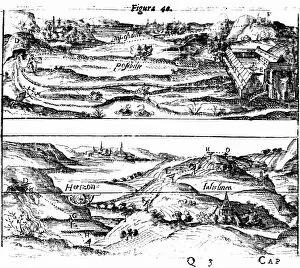Instrumentorum Collection
"Instrumentorum: Unveiling the Tools of Discovery in the Renaissance" Step into the fascinating world of instrumentorum
For sale as Licensed Images
Choose your image, Select your licence and Download the media
"Instrumentorum: Unveiling the Tools of Discovery in the Renaissance" Step into the fascinating world of instrumentorum, where innovation and exploration flourished during the Renaissance. One prominent figure who left an indelible mark was Michael Praetorius (1571-1621), a German composer and music theorist whose contributions extended beyond his musical prowess. Praetorius's insatiable curiosity led him to delve into various fields, including anatomy. His meticulous attention to detail is evident in his work "Instruments for Dissections, " an illustration from De Humani Corporis Fabrica. This masterpiece showcases intricate tools used by anatomists during dissections, revealing their commitment to unraveling the mysteries of human anatomy. Another remarkable depiction comes from Johann Dryander's "Annulorum. " Through colored engravings, Dryander captures the beauty and complexity of instruments utilized in medical procedures. These images serve as a testament to the ingenuity and craftsmanship involved in advancing surgical techniques during that era. One particularly intriguing invention showcased is the worm-driven fire squirt, depicted through captivating engravings. This innovative device employed worms' natural movements to create pressure for extinguishing fires—an ingenious solution born out of scientific experimentation. The Theatrum anatomicum van Leidse Academie (1609) by Jacob Marcus provides us with a glimpse into early academic settings dedicated to anatomical studies. It stands as a testament to how these institutions fostered collaboration among scholars eager to push boundaries and expand knowledge. Beyond medicine, instrumentorum encompassed diverse disciplines such as surveying. Levinus Hulsius's planimeter used alongside a set square revolutionized land measurement techniques—a vital tool for mapping territories accurately. Surveying also relied on other instruments like quadrants for measuring angles or obtaining levels and altitudes—essential components in charting uncharted territories or constructing grand architectural wonders. As we explore this captivating world of instrumentorum, we encounter the name Michael Praetorius once again.

